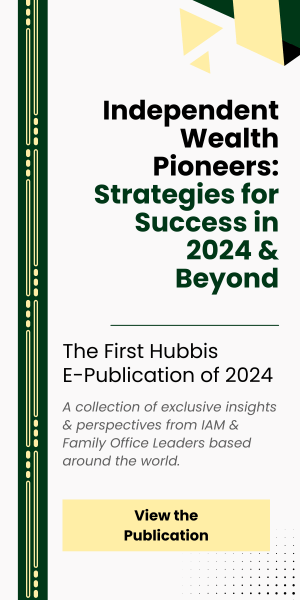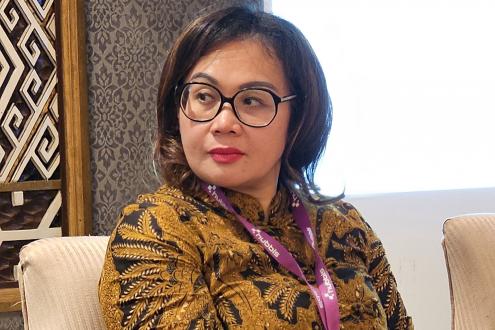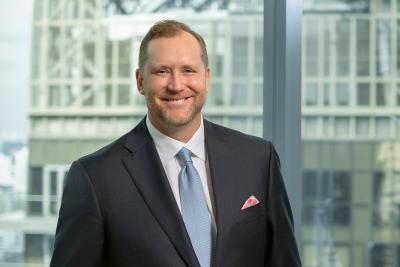Indonesian Wealth Management: How to Survive and Prosper in the World Ahead

Meru Arumdalu of Standard Chartered Bank
Jun 1, 2023
How is the asset and wealth management industry evolving in the local Indonesian market? How does this compare with trends in SE Asia? What growth potential lies ahead, and where are the key opportunities for the foreseeable future? Investors and regulators are pushing down fees, so how will wealth managers survive? What has to change in the industry if it is to realise its full potential? These and other questions were put to a panel of experts at the Hubbis Indonesia Wealth Forum in Jakarta. One of the expert speakers was Meru Arumdalu, Head of Wealth Management at Standard Chartered Bank in Jakarta. She offered her insights into how wealth management firms should be positioned for the growth that lies ahead as Indonesia’s economy continues its progress in the post-pandemic world. She explained that despite some early scepticism and initial resistance, the bank had managed to deliver a much more digital and also hybrid wealth management model that both customers and team members can now utilise. Relevance, suitability, personalisation, a holistic offering and customer-centricity were some of her key watchwords. This is a brief summary of some of her observations.
The Panel:
Chair
Dr. Silvio Struebi
Partner
Simon-Kucher Global Strategy Consultancy
Panel Members
Meru Arumdalu
Head of Wealth Management
Standard Chartered Bank
Antony Dirga
President Director
Trimegah Asset Management
Yulius Ardi
Head of Wealth Management
Bank Danamon
Meru was asked about the one thing that wealth managers must get right in the next few years and replied with considerable aplomb. “Indonesia is not as mature in terms of wealth management as countries like Singapore and Hong Kong, or even India, so the most important element is to achieve the right approach to the clients,” she observed.
She said they need segmentations, as they have elderly clients that have been banking with us for many years, with variety within the category, usually understand well the wealth management products. And then there is an increasing number of customers in the 30 to 50-year-old bracket that comprises more affluent clients.
different approach, she said, a little bit different in how they communicate with customers. “Regarding the products, we have a more limited range of products compared to operations in Singapore and Hong Kong, or even other Asian markets. But even so, the key, most important aspect is how we approach these clients and build relationships, to genuinely understand their growing needs,” Meru explained.
She said they need to deepen these relationships to provide holistic solutions for client’s investment objectives.
The RMs must learn to approach and manage their clients differently. Not all clients are elderly HNWIs, and it is vital for these RMs to forge relationships with those belonging to younger demographics.
Turning to digital transformation, Meru explained that Standard Chartered had invested heavily and wisely in digital solutions, even before the pandemic years. Risk profiling had been elevated so that greater suitability and relevance could flow in the product offerings. Clients can self-direct activity as they wish, and then see their transactions and also easily see their portfolio information. And yet, this should be without losing the human communication, where regular portfolio reviews are conducted by RM to clients.
She said this was especially important across the younger age groups, those typically aged 50 years old and below, who may tend to have less knowledge and experience than the older and wealthier clients, due to the fact that they may only recently have entered their wealth management phase.
“We provide them with digital solutions, but the hybrid approach allows the RM and clients to have regular conversations, allowing an understanding of the client risk profile, client needs or investment objectives, as likely accounted for in their age cycle,” she said.
And the bank has portfolio conversations to help them diversify across wealth management products, such as fixed income, funds, bancassurance. “All of that requires the right skills for the RM to actually bring up the conversation, which means lots of training, another key lesson we learned during the pandemic,” she elucidated. “And then we make sure we make an effort to educate and nurture the customers, at the same time making sure we are marketing our brand and communicating our strengths.”
Meru pointed out how this all sits well with regulatory changes, for example the recent rules on customer protection.
“Transparency and customer protection are good, so that we actually can avoid any misunderstanding and so we are able to explain and provide more solutions to clients,” she said.
Her last word was on the need to look from the clients’ perspective, to see things through the customer’s eyes, and really strive to be as customer centric as possible, leveraging all the data and behavioural tools at the bank’s disposal.

Head of Wealth Management at Standard Chartered Bank

More from Meru Arumdalu, Standard Chartered Bank
Latest Articles






